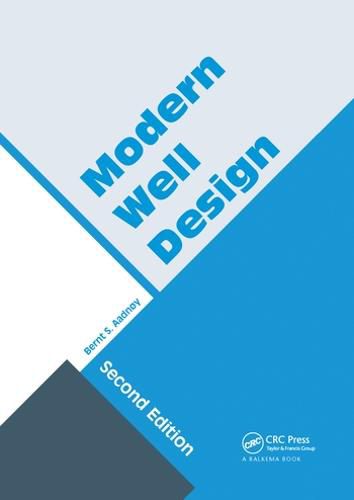Readings Newsletter
Become a Readings Member to make your shopping experience even easier.
Sign in or sign up for free!
You’re not far away from qualifying for FREE standard shipping within Australia
You’ve qualified for FREE standard shipping within Australia
The cart is loading…






Modern Well Design - Second Edition presents a unified approach to the well design process and drilling operations. Following an introduction to the field, the second chapter addresses drilling fluids, as well as optimal mud weight, hole cleaning, hydraulic optimization, and methods to handle circulation losses. A relatively large chapter on geomechanics follows, presenting methods for wellbore fracture and collapse modeling, including methods to interpret caliper logs.
Contains a new generalized fracture model suitable for deep-water drilling The start of any well design is to collect data and establish the design premises. To this end, Chapter Four presents well integrity issues, methods to select depths of casing seats, and also some important completion and production requirements. This encourages the design of a plan to last for the entire life of the well, defining loads that it may be subjected to at later stages.
Chapters Five and Six describe actual well design in the North Sea and a sub-sea high pressure high temperature (HPHT) well. Chapter Seven also addresses issues related to well integrity, and presents statistics regarding failures with production and injection wells.
Written for those performing work related to petroleum wells, including drilling and production engineers, drilling supervisors, and exploration geologists, this book can also serve as the basis for curriculums in well design courses for engineers at the undergraduate and graduate level.
$9.00 standard shipping within Australia
FREE standard shipping within Australia for orders over $100.00
Express & International shipping calculated at checkout
Modern Well Design - Second Edition presents a unified approach to the well design process and drilling operations. Following an introduction to the field, the second chapter addresses drilling fluids, as well as optimal mud weight, hole cleaning, hydraulic optimization, and methods to handle circulation losses. A relatively large chapter on geomechanics follows, presenting methods for wellbore fracture and collapse modeling, including methods to interpret caliper logs.
Contains a new generalized fracture model suitable for deep-water drilling The start of any well design is to collect data and establish the design premises. To this end, Chapter Four presents well integrity issues, methods to select depths of casing seats, and also some important completion and production requirements. This encourages the design of a plan to last for the entire life of the well, defining loads that it may be subjected to at later stages.
Chapters Five and Six describe actual well design in the North Sea and a sub-sea high pressure high temperature (HPHT) well. Chapter Seven also addresses issues related to well integrity, and presents statistics regarding failures with production and injection wells.
Written for those performing work related to petroleum wells, including drilling and production engineers, drilling supervisors, and exploration geologists, this book can also serve as the basis for curriculums in well design courses for engineers at the undergraduate and graduate level.